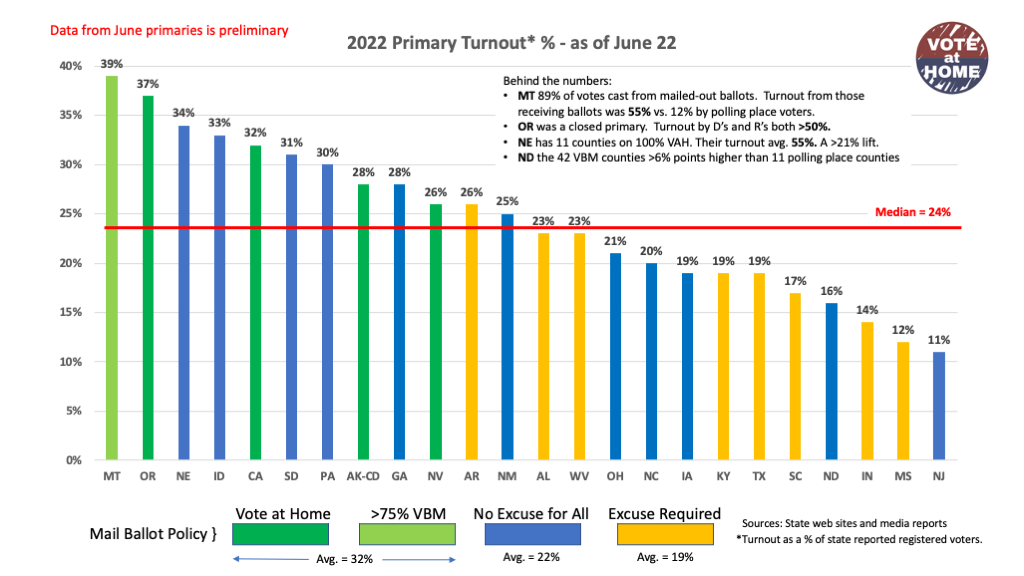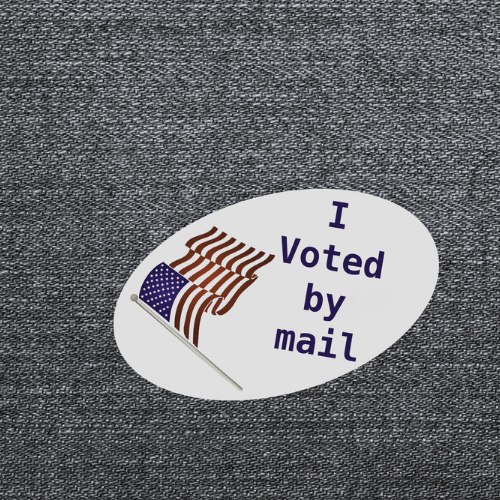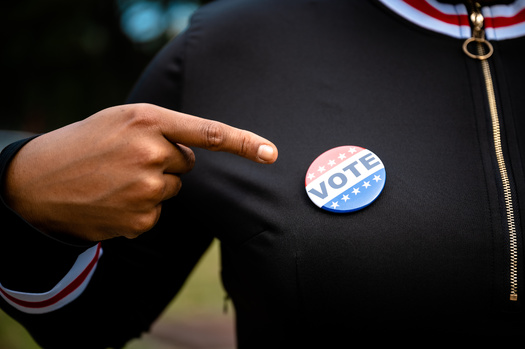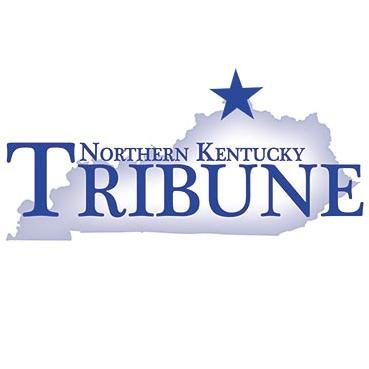New Jersey Monitor – Gov. Phil Murphy on Thursday signed a package of seven election bills into law the governor said will make democracy in New Jersey stronger, more accessible, and more transparent. The bills — which do everything from allowing minors to serve as poll workers to permitting the counting of mail-in ballots prior to Election Day — passed the Legislature in June before lawmakers went on their customary summer recess.
New USPS Election Division Will Oversee Mail-in Ballots
AP – The United States Postal Service is creating a division to handle election mail issues as part of an effort to ensure swift and secure delivery of ballots for the 2022 midterm election, officials said Wednesday.
Carney Signs Election Reform Bills, Both Face GOP Legal Challenge
Delaware Public Media – Gov. John Carney (D) signed two election reform bills Friday, enabling Delawareans to register to vote on election day and to vote by mail. And both immediately drew a court challenge on constitutional grounds.
Vote by Mail Expands in the East
Washington Monthly – In 1638, the white, landowning Puritan men of the Massachusetts Bay Colony gathered on Election Day to vote for a new colonial governor. For the next 380 years, the franchise expanded, but the citizens of what became the Commonwealth of Massachusetts continued to vote in the same manner: by showing up on Election Day to cast ballots at polling places. While other states, particularly in the West, made voting convenient by mailing citizens their ballots, the Bay State stuck to its old ways.
No Major Problems With Ballot Drop Boxes in 2020, AP Finds
AP – The expanded use of drop boxes for mailed ballots during the 2020 election did not lead to any widespread problems, according to an Associated Press survey of state election officials across the U.S. that revealed no cases of fraud, vandalism or theft that could have affected the results.
Vote-By-Mail States Outperform Others in Primary Turnout This Year
The Fulcrum – While midterm primaries draw lower participation rates than other elections, states have demonstrated a wide range in turnout numbers in 2022. And nearly every state that predominantly relies on voting by mail has outperformed the national midpoint this year.
Strong Vote-By-Mail Policies Correspond With Higher Turnout in 2022 Primaries
With primaries in the books for more than half of the states, one unmistakable trend has emerged — states offering easy access to mail-in ballots are experiencing significantly greater turnout than their more restrictive counterparts. Average turnout in full vote-at-home states — California, Colorado, Nevada, Oregon, and Utah — in which voters are automatically mailed ballots for every election is 30%. Combine that with states where a significant voting cohort are voting absentee, and you have as much as a 10-point turnout lift when compared to states with smaller vote-by-mail populations. Meanwhile, states that require their voters to apply for a mail-in ballot for every election or to have an excuse to vote absentee are averaging 23% and 18% respectively.
These figures on their own are unimpressive. It has long been a disappointing trend in U.S. elections that turnout surges during presidential elections then trails off in primaries and other contests, often at embarrassingly low rates. We should strive to boost turnout in non-presidential elections as more localized races have a greater bearing on citizens’ day-to-day lives.
However, the fact that states with more expansive vote-by-mail policies are trending as high as 10 percentage points on average when compared to states with more restrictive policies should be reason for lawmakers to consider removing barriers to accessing mailed-out ballots.
In just this past month, Rhode Island, Massachusetts, and Delaware have all enacted laws to eliminate the requirement that voters have an excuse to vote by mail. These are three states with long traditions of going to the polls with the exception of temporary pandemic-era policies that made it easier for their electorate to obtain mailed-out ballots, during which they experienced record turnout compared to previous presidential elections. Their recent move to go “no excuse for all” reduces the portion of the U.S. electorate that needs an excuse to vote absentee to only 13.4% — and the remaining 14 states that still require a justification should follow suit.
Applause for these major milestones has been tentative, however. Republicans have filed a lawsuit against Massachusetts’ VOTES Act, which was recently signed into law by Republican Gov. Charlie Baker, questioning its constitutionality. Meanwhile Republicans in Rhode Island and Delaware have also hinted at legal action against their respective vote-by-mail laws. Among criticisms of Massachusetts’ new law, 6th Congressional District Candidate Bob May said the motivation behind its passage is to give a boost to Democratic incumbents.
Claims that vote-by-mail election outcomes benefit Democratic candidates are nothing more than fallacies fueled by misinformation. Research conducted at Stanford University found no partisan lean when examining election outcomes in California, Washington, and Utah. Plus, Massachusetts has long been controlled by a Democratic majority, under far less mail-in-voting-friendly circumstances.
Montana, where nearly 90% of its voters cast vote-by-mail ballots, has the highest turnout to date for the 2022 primaries at 39%.
Even in Nebraska, another Republican stronghold, the 11 mostly rural counties that have opted into a full vote-at-home model are seeing the advantage of automatically mailing ballots to their voters. Turnout in those counties averaged 55% in their May 10 primary, more than 20% higher than the remainder of the state. Similarly, North Dakota’s 42 vote-by-mail counties are averaging greater than 6% higher than its 11 polling-place counties.
And in Oregon’s May 17 closed primary, meaning only Republicans and Democrats could participate in their respective party elections, turnout for both parties exceeded 50%. Although Oregon, like Massachusetts, has a strong Democratic majority, both parties benefited from the ease and convenience of voting by mail.
Bottom line: Vote-at-home elections ensure equitable access for all; they do not favor one party or voting group.
Lawmakers of all political persuasions should be pursuing policies proven to boost turnout across demographics. A recent study of mail-ballot use and voter participation found that turnout increased an average of 5.6% during the 2020 presidential election in states that mailed a ballot to every registered voter. The effects of mail-ballot delivery were even greater in jurisdictions with historically low mail-ballot usage, boosting turnout by as much as 8%. Even in the primary elections that have taken place so far this year, states with strong vote-at-home models are clearly outperforming less advanced states.
It’s high time lawmakers put aside conspiracy theories and partisan quibbling and enact reforms proven to drive participation in our democracy from all corners of our country.
###
Lori Augino is the executive director of National Vote at Home Institute, a nonpartisan 501(c)(3) organization dedicated to improved access to and confidence in vote-at-home election systems. She previously served as the Washington State Elections Director from 2013-2021 and the 2020-2021 president of the National Association of State Election Directors.
Key Takeaways From the 2022 Primaries (So Far)

- Vote-at-home states (OR, NV, and CA, and the mail-in special primary in AK) and states offering extensive access to mail ballots are outperforming others, averaging 32% turnout. This is compared to states that require an excuse to vote absentee or voters to apply for a mail-in ballot every election, which are averaging 19% and 22% respectively.
- Nebraska, although not a vote-at-home state, has 11 counties voting entirely by mail. Turnout in those counties averaged 55%, more than 20% higher than the remainder of the state.
- Similarly, North Dakota’s 42 vote-by-mail counties are averaging greater than 6% higher than its 11 polling-place counties.
- Nearly 90% of the votes cast in Montana were from mailed-out ballots. Turnout from voters receiving those ballots was 55% versus 12% by polling-place voters.
- Oregon, a full vote-at-home state is also a “closed primary” state, meaning only Republicans and Democrats can participate in their respective party elections. Turnout for Republicans and Democrats both exceeded 50%. Those rates are more than double the total turnout in many states where all voters were eligible to participate.
New Report Shows Rural Voters Rely on Vote-By-Mail, Early Voting, Including 72% Of Rural Kentucky Voters
Northern Kentucky Tribune – Voters in rural areas across the country heavily rely on alternative ways to vote, including voting by mail and in-person early voting, and newly proposed state legislation would restrict their ability to cast a ballot, according to a new report by the nonpartisan election policy group Secure Democracy USA.
In Alaska’s First Statewide By-Mail Vote, Turnout Was Highest for a Primary Since 2014
Alaska Public Media – Final preliminary results posted Tuesday night by the Alaska Division of Elections show 161,614 people voted in the special election for U.S. House, Alaska’s first statewide election by mail.









